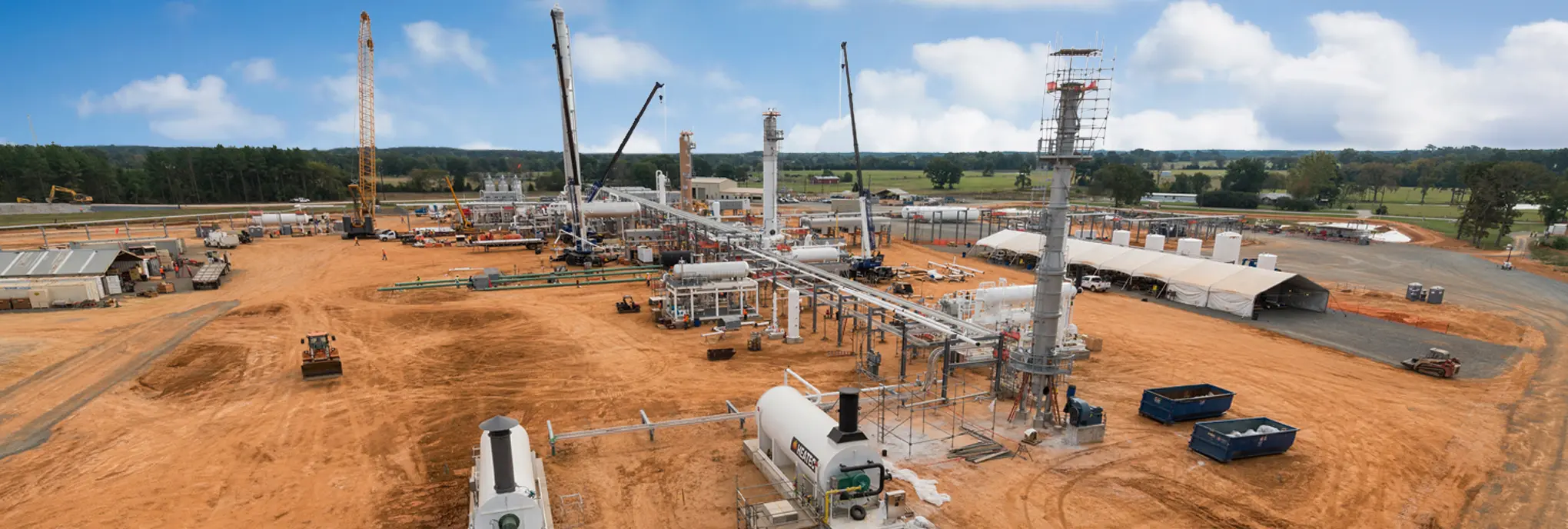

Want to share this article?
The Path to Net Zero: Accelerating Carbon Capture Deployment in the Energy Sector
At a glance
- Carbon capture and storage—Definition, basic overview, and applications
- Three carbon capture technologies—Post-combustion capture, pre-combustion capture, and oxy-fuel combustion
- Mission possible—Achieving decarbonization in oil and gas
- Getting to net zero energy—Taking steps today for a sustainable tomorrow
- The future of decarbonization—Continued investment and innovation
What is carbon capture and storage?
As the world looks toward attaining a more sustainable future, businesses and government entities are taking proactive steps to reduce greenhouse gas emissions. The energy sector’s response has been to lead a global effort to reduce its footprint through energy transition.
An effective technology in the decarbonization of the energy sector, carbon capture and storage (also known as CCS), continues to gain recognition as a key tool for achieving net zero energy emissions. According to the International Energy Agency (IEA),(Ref. 2) CO2 emissions from energy and industry have increased 60% over the last 30 years. CCS technology can potentially reduce up to 13% of global CO2 emissions by 2050.
Carbon capture and storage encompasses a suite of technologies and services that seize carbon dioxide (CO2) from industrial processes and store it underground. Once harnessed, the CO2 cannot affect the atmosphere. CCS especially benefits difficult-to-decarbonize industries, such as energy and chemicals.
Three effective carbon capture and storage technologies
Carbon capture technology works by separating and treating a relatively pure stream of CO2 from industrial sources. Once captured, the CO2 is transported to a long-term storage site and injected into underground rock formations.
Industrial processes use three methods of carbon capture: post-combustion, pre-combustion, and oxy-fuel combustion.
- Post-combustion capture, the most common method, captures CO2 emissions from exhaust gases after burning fossil fuels. This method is effective but can be energy-intensive and costly.
- Pre-combustion capture harnesses CO2 before burning fossil fuels. This method involves converting the fuel into a gas, which reacts with steam to produce hydrogen and CO2. The technology captures and stores the CO2 while using the hydrogen as fuel.
- Oxy-fuel combustion involves burning fuel with pure oxygen instead of air to produce a concentrated, easy-to-capture CO2 stream. This method is still in development and therefore not widely used.
All three methods of carbon capture have advantages and drawbacks. The choice of method depends on your specific context, such as your industrial process and its unique characteristics.
Achieving decarbonization in oil and gas
Carbon capture technology makes it possible to achieve decarbonization of the oil and gas sector by capturing and storing emissions from a range of industry processes, including power generation and refining. The IEA(Ref. 1) highlighted the oil and gas sector as an area where CCS can make a significant impact. Their report states that CCS can potentially reduce CO2 emissions by up to 75% in power generation and up to 90% in refining processes.
Decarbonizing the oil and gas industry presents many challenges, chief among which is the ever-increasing demand for energy. CCS technology overcomes this challenge by enabling the continued use of traditional fossil fuels while still reducing emissions. The combination of CCS with other renewable energy technologies, such as hydrogen, can also accelerate the decarbonization process to make net zero energy achievable.
Taking steps today to achieve a net zero energy future
Net zero energy is defined as a state where the amount of greenhouse gas emissions produced is equal to the amount removed from the atmosphere. By capturing and storing CO2 emissions, carbon capture technology reduces emissions and moves the world closer to a net zero future.
The successful deployment of CCS in power plants and industrial facilities across the globe means we can expect it to become more mainstream going forward. For example, the Norwegian government launched the Longship project(Ref. 2) to capture and store CO2 from industrial sites in the Oslo fjord. Additionally, national and international energy companies like ExxonMobil(Ref. 3) have begun to invest in carbon capture technologies for use in the company’s oil and gas operations.
As an example, a public energy company deployed a large-scale CCS project to capture and sequester around 1.5 million metric tons of CO2 every year. To achieve this scale of CCS, the company enlisted Audubon for system design and project management. With the support of a reputable engineering company with expertise in specialized services like carbon capture, the operator successfully processes and captures CO2 via pipeline and permanently sequesters it, contributing to clean energy objectives.
The future of decarbonization through carbon capture and storage
The trend is for governments and industries to commit to achieving net-zero emissions. As one of the most promising technologies in the global initiative to reduce carbon footprint, the demand for CCS technologies will continue to expand.
To unlock the full potential of CCS, however, there needs to be continued innovation and investment. On the horizon, we see several exciting developments emerging:
- Direct air capture (DAC)(Ref. 4) technology seizes CO2 directly from the atmosphere using filters or solvents. Although still in its infancy, DAC has the potential to remove large amounts of CO2 from the atmosphere and could be valuable for achieving environmental goals.
- Carbon capture technologies are being designed to generate useful products, such as carbon fiber and building materials. This innovation will create a market for captured CO2 and make the process more economically viable.
Overall, the possibility of a net zero energy future appears bright with technologies like carbon capture and storage. Continued investment and innovation will only increase its potential.
About the author
David Beck is Managing Director at Audubon Engineering Company. With more than 25 years of experience in executive management and business development in the oil and gas industry, David’s expertise extends to international and domestic operations, midstream gas processing, midstream services, and LNG/GL recovery. David holds dual Bachelor of Science degrees in Chemical Engineering and Biochemistry from Texas Tech University.
References:
1) IEA
2) Longship project
3) ExxonMobil
4) DAC
About the author













